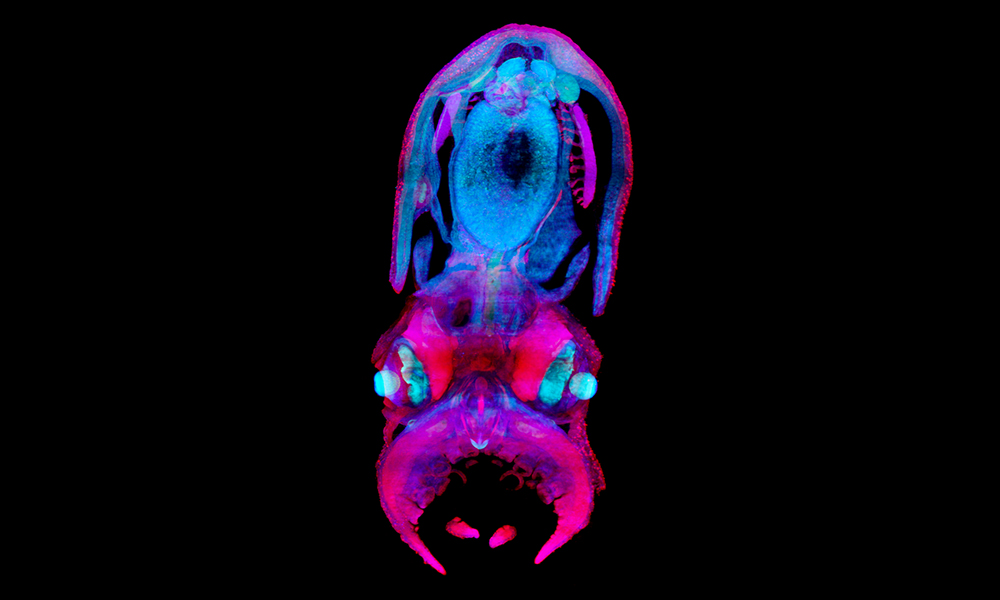When you purchase through link on our site , we may earn an affiliate perpetration . Here ’s how it works .
Your interior organ acquire and change throughout your life , but rarely do they vanish without a trace . For babyoctopuses , things are not so simple .
Before they are assume , embryotic octopuses shoot hundreds of temporary , microscopical structure known as Kölliker ’s pipe organ ( KO ) . These tiny organ cut through every surface of the octopus ’s body , sometimes hiding inside trivial pockets in the pelt , and sometimes continue ( or " everting " ) like tiny fold - up umbrella . Once everted , each organ may flower open , let on a burst of bristly fiber .

Microscopy images showing the mysterious Kölliker’s organs extending and blooming from a young octopus' arm
" When partly evert , KO reckon like a heather , " Roger Villanueva , a researcher with the Institut de Ciències del Mar at the Spanish National Research Council ( CSIC ) , told Live Science in an email . " When totally evert , KO looks like one-half of a blowball blossom . "
Related:8 crazy facts about devilfish
Biologists have known about these microscopic flowering organs for ten — but none could say for trusted what they are for , or why embryonic octopuses completely lose their array of bristly bits and bobs long before attain maturity . Now , recent enquiry by Villanueva and his colleague help to exuviate light on the cryptical disappearing organs .

(A -D) Microscope imagery of KO erupting from an octopus’s mantle. (E -H) KO blooming open on the octopus' arm.(Image credit: Montserrat Coll Lladó, Jim Swoger/EMBL)
In a study published in the May 2021 offspring of the journalFrontiers in Marine Science , the researchers examined 17 species of embryonic octopuses using a proficiency called clear - sheet microscopy — essentially , a path of soak up a sampling in fluid to make that sample transparent , then polish light through it to highlight heavy - to - see structures .
Of the 17 species learn , 15 had KO ; the two that did n’t were both holobenthic octopuses , meaning they are born comparatively big and spend their entire lives in the deep ocean . Almost all of the 15 species that did have KO are stick out planktonic — mean hatchlings are born very pocket-size and swim higher in the water pillar while their bodies grow and morph into adulthood .
The team learned that KO are dispersed evenly across the bodies of young octopuses , and they tend to be the same size of it , regardless of the size of the embryo . They also discovered that , when all of an octopus ’s KO are fully spread undecided , the beast ’s open area increases by a whopping two - thirds .

A 30-day-old octopus imaged with light-sheet microscopy(Image credit: Montserrat Coll Lladó, Jim Swoger/EMBL)
These discoveries could hint at the orphic aim of KO , the investigator said .
" [ We ] reckon that the variety meat could be used by the young octopuses to increase their surface - to - volume proportion , " Villanueva , who is the study ’s confidential information author , suppose in a financial statement .
With the ability to significantly increase or diminish their surface region , young octopuses may be better fit out to impel themselves through ocean current , or to reject them — a particularly utile trait for planktonic hatchlings , which spend their early spirit run at the whimsy of those currents . Deploying or retracting their KO could help oneself the hatchlings conserve energy , the researchers hypothesized .

Light-sheet microscopy image of a 30-day-old octopus. The black dots on the specimen’s arms and mantle are KO.(Image credit: Montserrat Coll Lladó, Jim Swoger/EMBL)
But there ’s another , sneakier possibility . The investigator point to a 1974 bailiwick in the journalAquaculture , which showed that , like crystals , KO canrefractlight in multiple way . This refractile ability could help smear the hatchling ’s outline in the water , make them harder for predators to catch , the researchers say . If KO playact a role in camouflage , that could explain why many devilfish that dwell near the bass , glowering sea level do n’t grow KO at all ; in the lightless depth , there ’s no pauperism for camouflage .
— photo : Deep - sea expedition discovers metropolis of octopuses
— In photos : Amazing ' octomom ' protects egg for 4.5 year

— Photos : Ghostly dumbo devilfish dancing in the mystifying sea
It ’s a hypothesis , anyway ; even after looking closer at the social organisation of KO than any study before , the researchers say the lawful determination of the strange , disappearing organs rest a closed book . Future observations of hatchling devilfish in the natural state could serve life scientist come closer to an explanation . For now , the researchers are happy just to share the foreign beauty of little cephalopods like they ’ve never been seen before .
" To search inside the tissues and organs of hatchling and jejune octopuses at cellular resolution has been enchanting , " field of study co - author Montserrat Coll - Llado , a mesoscopic imaging specialist at the European Molecular Biology Laboratory , Barcelona , tell Live Science . " It ’s been like exploring the piddling corners of a city where you ’ve never been — but better . "

earlier publish on Live Science .
















